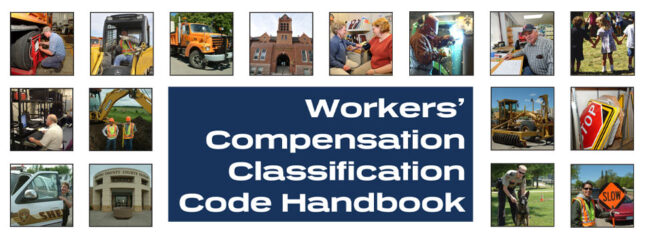Article
Workers’ Compensation Coverage for Volunteers

Volunteers are a great resource utilized by many departments within governmental entities. From time to time, a person may be injured during his or her volunteer activity. Most injuries that occur while volunteering are not covered by the entity’s workers’ compensation coverage. For those volunteer injuries not covered by workers’ compensation, MCIT’s medical payments coverage may pay medical bills up to $2,500 subject to member and MCIT approval. See Medical Payments Coverage for more information about that option.
Some categories of volunteers, however, are granted coverage under the Minnesota Workers’ Compensation Act and the Minnesota Emergency Management Act as indicated below.
The distinction between a compensable injury and one that is not covered when it comes to volunteers is sometimes unclear. As such, MCIT recommends that members report every injury to MCIT in a timely manner, and the claims staff will determine the eligibility of that volunteer for workers’ compensation benefits.
Workers’ Compensation General Rule
Although each incident is fact specific, there are some general rules that provide guidance in determining when a volunteer’s injury or illness is compensable under the workers’ compensation law.
Minnesota Statutes Section 176.021, subdivision 1, triggers liability for work injuries by providing that “every employer is liable … to pay compensation in every case of personal injury or death for an employee arising out of and in the course of employment without regard to the question of negligence.”
“Personal injury” is defined as an injury arising out of and in the course of employment and includes personal injury caused by occupational disease, but only covers an employee while engaged in, on or about the premises where the employee’s services require the employee’s presence as a part of such service at the time of the injury and during the hours of service.
Generally, all of the following must exist for an injury or illness to be compensable:
- The employee must sustain a personal injury or occupational disease.
- The personal injury or occupational disease must arise out of employment.
- The personal injury or occupational disease must occur in the course of employment.
Generally “employee” is defined as “any person who performs services for another for hire.”
Workers’ compensation generally requires an employer-employee relationship. Inherent in this relationship is the concept of remuneration for services rendered.
In determining whether an employer-employee relationship exists, a number of factors are considered:
- Is there a contract for hire, either express or implied?
- Did the parties contemplate the payment of wages or other remuneration in compensation for services rendered?
- Were the services performed at the specific direction of the employer or agent of the employer?
Exceptions to the Workers’ Compensation General Rule
Certain individuals, though truly volunteers in the sense of receiving no remuneration, may be entitled to workers’ compensation benefits under the Minnesota Workers’ Compensation Act (Minn. Stat. Ch. 176). The Act defines “employee” as any person who performs services for another for hire including the following.
Emergency Management Volunteers
A voluntary uncompensated worker engaged in emergency management as defined in section 12.03, subdivision 4 who is:
- registered with the state or any political subdivision of it, according to the procedures set forth in the state or political subdivision emergency operations plan; and
- acting under the direction and control of and within the scope of duties approved by the state or political subdivision (Minn. Stat. Sect. 176.011, subd. 9(a) (9)).
Social Services Program Volunteers
Those individuals who are volunteering as part of a program created by local social services agencies are extended coverage under the Act (Minn. Stat. §176.011 subd. 9(a) (10)). The statute does not provide significant guidance on what constitutes a volunteer worker in this regard.
Entities should be cautious when using volunteers for any programs where they may be put at risk or come into contact with potentially dangerous situations. Any injuries that arise from those situations may be compensable.
Nonemergency Ambulance Staff Volunteers
Under Minnesota Statute Section 176.011, subdivision 9(a) (20), a worker who performs volunteer ambulance driver or attendant services for a political entity, nonprofit hospital, nonprofit corporation or other entity is considered an employee for workers’ compensation purposes.
Nonemergency First Responder and Law Enforcement Volunteers
Outside of emergency situations, uncompensated volunteers working as either first responders or as members of a law enforcement assistance organization (e.g., posse) are provided coverage while working at the direction of the entity (Minn. Stat. § 176.011 subd. 9(a) (23)). The statute does not provide a definition of “first responder,” but the list provided regarding emergency management volunteers provides some insight into what may be covered.
Members should be aware that when training or relying on volunteers, they may be treated identical to employees for the purposes of workers’ compensation.
Minnesota Responds Medical Reserve Corps (MRC)
An MRC volunteer is someone responding at the request of or engaged in training conducted by the commissioner of health as provided in sections 145A.04 and 145A.06.
- State coverage for volunteers applies only when the Minnesota Department of Health has called for MRC volunteer help outside their home jurisdictions because a major response is needed for the event, disaster or emergency. The MRC registered volunteers then become state assets and are covered for workers’ compensation and liability coverage as if they were state employees.
- MRC volunteers may be covered by the county to which they belong only when they fit within the emergency management definition. (Minn. Stat. Sect. 176.011, subd. 9(a) (25)
Public Health Volunteers
Under the Workers’ Compensation Act, a volunteer performing public health services can be covered for workers’ compensation. In Section 176.011, subdivision 9(a), clauses (9) and (25), the Legislature has expanded the definition of “employee” to include volunteers acting in the emergency management capacity described above.
Chapter 12 Emergency Management Volunteers
In addition to the coverage for some volunteers defined in the Worker’ Compensation Act, emergency management volunteers, including public health volunteers, may be covered pursuant to the provisions of the emergency management statute that allow for individuals to assist a local political subdivision during an emergency or disaster.
Section 12.22 Subdivision 2a (a) Volunteers
Minnesota Statutes, Section 12.22, subdivision 2a (a) provides that individuals who volunteer to assist a local political subdivision during an emergency or disaster, and who register with that subdivision and are under the direction and control of that subdivision are considered employees of that subdivision for purposes of workers’ compensation and tort claim defense and indemnification.
These volunteers are covered only in the case of an emergency or disaster and may not be covered for training or preparation for an emergency or disaster.
“Emergency management” means the preparation for and the carrying out of emergency functions other than functions for which military forces are primarily responsible; to prevent, minimize and repair injury and damage resulting from disasters and from acute shortages of energy or from incidents occurring at nuclear power plants that pose radiological or other health hazards. These functions include, without limitation:
- firefighting services
- police services
- medical and health services
- rescue
- engineering
- warning services
- communications
- radiological
- chemical and other special weapons defense
- evacuation of persons from stricken areas
- emergency human services
- emergency transportation
- existing or properly assigned functions of plant protection
- temporary restoration of public utility services
- implementation of energy supply emergency conservation and allocation measures
- other functions related to civilian protection together with all other activities necessary or incidental to preparing for and carrying out these functions.
Other definitions in Chapter 12 that are relevant to this discussion include:
- Minnesota Statutes, Section 12.03, subdivision 2 Disaster. “Disaster” means a situation that creates an actual or imminent serious threat to the health and safety of persons, or a situation that has resulted or is likely to result in catastrophic loss to property or the environment, and for which traditional sources of relief and assistance within the affected area are unable to repair or prevent the injury or loss.
- Minnesota Statutes, Section 12.03, subdivision 3 Emergency. “Emergency” means an unforeseen combination of circumstances that calls for immediate action to prevent a disaster from developing or occurring.
When volunteers are performing one of the duties or functions listed above, they will meet the definition of “employee” and may be eligible for workers’ compensation as long as all of these conditions are met:
- They are registered with the entity.
- The registration is according to the entity’s emergency operations plan.
- Volunteers are acting under the entity’s direction and control.
- Volunteers are acting within the scope of the duties approved by the entity—generally in the emergency operations plan.
Training Activities for Volunteers
The analysis under the emergency management statute should be conducted to determine workers’ compensation eligibility for volunteers engaged in an exercise designed to prepare the community for a disaster or emergency. Is the activity one that is considered preparation for emergency services designed to prevent, minimize and repair injury and damage resulting from disasters or other health hazards? If the answer is yes and the training session is included in the emergency operations plan for the public entity, any injuries arising out of the training are most likely covered by workers’ compensation.
A final factor in the evaluation is whether the volunteer was acting under the direction and control of the same public entity that drafted the emergency operations plan and arranged the training.
When an MRC volunteer is registered and participating in a training session sponsored by the commissioner of health, he or she is considered a state employee for purposes of workers’ compensation coverage. However, an MRC volunteer participating in county-sponsored training must meet the definition of “emergency management volunteer” to be covered by the county’s workers’ compensation coverage for training exercises.
Not all health activities are considered emergency management functions. One example is the presence at a health fair. Attendance at a health fair may be the function of a public health department but is not the provision of emergency medical and health services. On the other hand, volunteers participating in a seasonal flu clinic that is designed as training for a mass dispensing exercise during an emergency would likely be covered for workers’ compensation regardless of who is sponsoring the training (the state or county).
Volunteers who meet the test of Subdivision 2a (a) of Section 12.22, i.e., volunteering to assist a local unit of government during an emergency or disaster, will be covered for workers’ compensation if they are engaged in training or a planning exercise.
Risk Management Advice
MCIT recommends that entities using volunteers prepare a roster of volunteers who may help out during an emergency, an incident or a training event. If the political subdivision is training or preparing for a disaster or emergency response, the training event for purposes of workers’ compensation will be treated the same as an actual response. Included below are two templates that may be copied and used to track an entity’s volunteers. A member may add other position descriptions to the rosters as needed. To facilitate reporting to MCIT and coverage for volunteers, members should track volunteer hours. This includes hours spent in training and when deployed.
In the event that a volunteer is involved in an incident causing injury or illness, certain factors must be present before a volunteer can be considered for coverage under the workers’ compensation statute. Once the volunteer meets the definition of “employee” under one of the statutory provisions listed above, the investigation of the claim proceeds like all other first reports of injury, i.e., did the incident arise out of the volunteer’s employment and did it occur during the course of employment?
When the middle and right columns are checked, the volunteer, during an emergency, meets the definition of an employee under the workers’ compensation statute. The other parts of the test need to be met before compensability can be determined.
| Activities/Functions to Be Performed by the Volunteer | Registered with County per Emergency Operations Plan | Acting Under Direction and Control of the County |
| Dispensing oral medication | ||
| Obtaining health information | ||
| Medication screening | ||
| Administering vaccinations | ||
| Interpreting or translating | ||
| Documentation and data entry | ||
| Scheduling/other administrative functions | ||
| First aid | ||
| Education | ||
| Managing/assisting with crowds and lines | ||
| Answering phone hotlines, e-mail and other communication with the public | ||
| Moving or monitoring supplies and equipment | ||
| Triaging and referrals | ||
| Assisting public with forms, clothing, wheelchairs, etc. | ||
| Establishing special needs shelter for disabled or elderly citizens (support emergency management positions); screening and first aid | ||
| Support medical care services in alternate setting due to disaster or emergency, e.g. flood | ||
| Managing pharmaceuticals (counting pills, breaking down shipments) | ||
| Pharmacist activity of separating bulk pills into individual dosages |
| Activity | Registered with County per Emergency Operations Plan | Acting under Direction and Control of County |
| Management of donated goods | ||
| Volunteer management | ||
| Cleaning crews | ||
| Sand bagging | ||
| Distribution of education materials | ||
| Data entry | ||
| Participate in exercises | ||
| Radiological emergency preparedness | ||
| Damage assessment | ||
| Community awareness: distribute community notification fliers, etc. | ||
| EOC assistance: answering phones, etc. | ||
| Large-scale search |
Risk Management Consultants Provide Advice
MCIT risk management consultants work with members to help with coverage, liability and risk management concerns. Members are encouraged to call them with their questions and to schedule a meeting.
Topics



